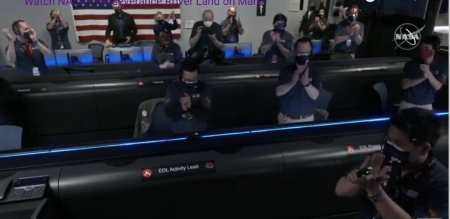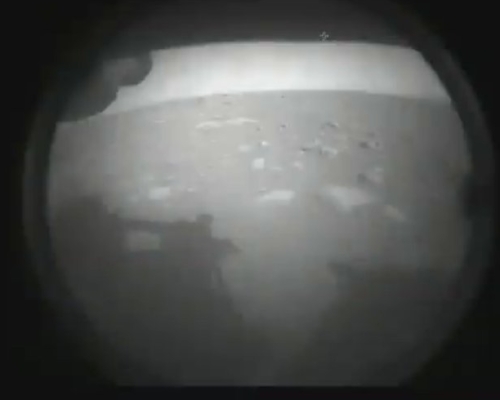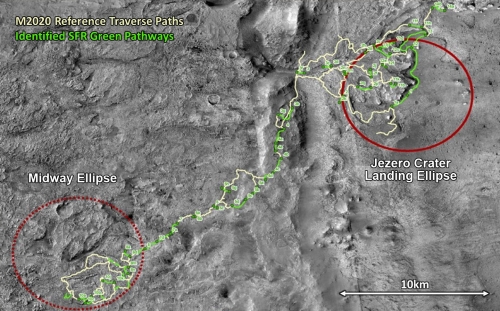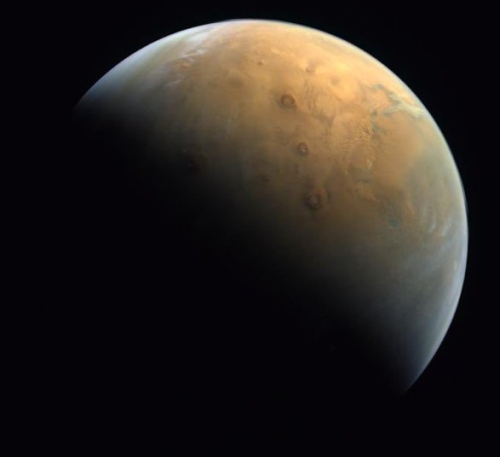Perseverance has successfully landed


The rover Perseverance has successfully landed in Jezero Crater on Mars.
The picture to the right is a screen capture of everyone cheering in the control room on hearing the good news.
The second image is the first image beamed back, from the rover’s hazard camera used mostly for guiding it in future travels. The haze is from the dust kicked up during landing.
The engineering narrator indicated that they also know exactly where the rover landed, and it is a good location, but NASA’s live stream appears uninterested in telling us this critical information. Right now they are spending time blathering on with more NASA propaganda.
I should get this information during the post-landing press conference, which begins at 5:30 (Eastern).
UPDATE: The press conference started 30 minutes late, and then spent the first 25 minutes letting the top NASA managers claim credit for everything. Then we finally got to hear from actual mission managers to tell us where the rover landed and what should happen next.
» Read more


The rover Perseverance has successfully landed in Jezero Crater on Mars.
The picture to the right is a screen capture of everyone cheering in the control room on hearing the good news.
The second image is the first image beamed back, from the rover’s hazard camera used mostly for guiding it in future travels. The haze is from the dust kicked up during landing.
The engineering narrator indicated that they also know exactly where the rover landed, and it is a good location, but NASA’s live stream appears uninterested in telling us this critical information. Right now they are spending time blathering on with more NASA propaganda.
I should get this information during the post-landing press conference, which begins at 5:30 (Eastern).
UPDATE: The press conference started 30 minutes late, and then spent the first 25 minutes letting the top NASA managers claim credit for everything. Then we finally got to hear from actual mission managers to tell us where the rover landed and what should happen next.
» Read more








